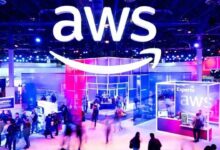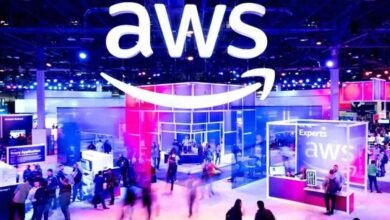AWS 53: The Ultimate Guide to Amazon Web Services EC2
Welcome to the ultimate guide on AWS 53—your go-to resource for mastering Amazon Web Services EC2. Whether you’re a beginner or a seasoned cloud architect, this comprehensive breakdown will demystify everything about AWS EC2, its features, use cases, and best practices.
Understanding AWS 53 and Its Role in Cloud Computing

When people refer to “AWS 53,” they often mean Amazon Web Services EC2 (Elastic Compute Cloud), though the number ’53’ might stem from confusion with Route 53, another AWS service. However, in this context, we’ll explore how AWS 53 is commonly misunderstood and clarify its connection to core AWS infrastructure like EC2 and Route 53. This section sets the foundation for understanding where AWS 53 fits—or doesn’t fit—within the AWS ecosystem.
What Is AWS 53? Clarifying the Misconception
The term “AWS 53” does not refer to an official AWS service by that exact name. Instead, it’s likely a mix-up between two major services: Amazon EC2 and Amazon Route 53. While EC2 provides scalable virtual servers in the cloud, Route 53 is AWS’s highly available Domain Name System (DNS) web service. The ’53’ in Route 53 refers to DNS port 53, a standard in internet protocols.
- “AWS 53” is not a standalone product but often used colloquially to reference AWS cloud computing capabilities.
- It may stem from discussions involving both EC2 and Route 53 in cloud architecture.
- Understanding the distinction helps avoid confusion when designing AWS solutions.
“The cloud is not a place, it’s a way of doing IT.” – Paul Maritz, former CTO of EMC and Microsoft
The Evolution of AWS EC2: From Inception to Dominance
Launched in 2006, Amazon EC2 revolutionized how businesses deploy and scale applications. Before EC2, companies had to invest heavily in physical servers and data centers. With EC2, developers could spin up virtual machines in minutes, paying only for what they used.
- EC2 was one of the first Infrastructure-as-a-Service (IaaS) offerings.
- It introduced the concept of on-demand compute capacity in the cloud.
- Over the years, EC2 has evolved with support for containers, GPUs, ARM processors, and serverless integrations.
AWS 53 and Route 53: Connecting Compute with DNS
While “AWS 53” isn’t a formal service, Route 53 plays a critical role in making EC2 instances accessible over the internet. This section explores how Route 53 works hand-in-hand with EC2 to deliver scalable, reliable, and secure web applications.
How Route 53 Directs Traffic to EC2 Instances
Amazon Route 53 translates human-readable domain names (like www.example.com) into IP addresses that computers use to connect. When you run a website on an EC2 instance, Route 53 ensures users can reach it via a custom domain.
- Route 53 supports DNS routing policies: simple, weighted, latency-based, failover, and geolocation.
- You can map a domain name to an EC2 public IP or Elastic IP using A records.
- Integration with AWS Certificate Manager allows secure HTTPS connections via SSL/TLS.
For example, if you host a blog on an EC2 instance, you’d register a domain through Route 53 (or import an existing one), create a hosted zone, and point the A record to your instance’s public IP. This makes your site accessible globally.
Health Checks and Failover with Route 53
One of Route 53’s most powerful features is its ability to perform automated health checks on EC2 instances. If an instance fails, Route 53 can automatically redirect traffic to a backup instance in another Availability Zone or region.
- Health checks monitor endpoints over HTTP, HTTPS, or TCP.
- You can set thresholds for response codes, timeout durations, and retry attempts.
- Failover routing policies enable active-passive or active-active architectures.
Learn more about Route 53 health checks at AWS Route 53 Health Checks Documentation.
Core Features of AWS EC2: The Real Power Behind AWS 53
Although “AWS 53” isn’t a real service, the compute backbone of AWS—EC2—is central to nearly every cloud deployment. Let’s dive deep into the key features that make EC2 indispensable for modern application development.
Instance Types and Use Cases
EC2 offers a wide variety of instance types optimized for different workloads. Each type balances CPU, memory, storage, and networking capacity.
- General Purpose (e.g., t4g, m6i): Balanced performance for web servers, small databases, and development environments.
- Compute Optimized (e.g., c7g): High-performance processors ideal for batch processing, gaming servers, and scientific modeling.
- Memory Optimized (e.g., r7g): Designed for high-speed caching, in-memory databases like Redis, and real-time big data analytics.
- Storage Optimized (e.g., i4i): High sequential read/write access, perfect for NoSQL databases and data warehousing.
- Accelerated Computing (e.g., p5, g5): GPU-powered instances for machine learning, video encoding, and HPC.
Choosing the right instance type impacts cost, performance, and scalability—critical considerations when architecting with AWS 53-like infrastructures.
Amazon Machine Images (AMIs) and Customization
An Amazon Machine Image (AMI) is a template that contains the software configuration (OS, application server, apps) required to launch an EC2 instance. AWS provides pre-configured AMIs, or you can create your own.
- Public AMIs are shared by AWS or the community (e.g., Ubuntu Server, Amazon Linux 2023).
- Private AMIs are restricted to your AWS account for security and compliance.
- Custom AMIs allow you to bake in configurations, reducing setup time during scaling events.
Using tools like Packer or AWS Image Builder, teams can automate AMI creation, ensuring consistency across environments.
Networking and Security in AWS 53 Environments
Secure and efficient networking is crucial when deploying EC2 instances, especially when referencing architectures colloquially known as “AWS 53.” This section covers Virtual Private Clouds (VPCs), security groups, and network access control lists (NACLs).
Building a Secure VPC for EC2 Instances
A Virtual Private Cloud (VPC) is an isolated section of the AWS cloud where you can launch AWS resources in a virtual network that you define.
- You can define IP ranges, subnets, route tables, and gateways.
- Public subnets allow internet access via an Internet Gateway.
- Private subnets keep instances isolated, accessible only through NAT gateways or AWS Direct Connect.
For example, a typical three-tier web app might have:
- Web servers in public subnets (front-end)
- Application servers in private subnets (middle-tier)
- Database servers in a tightly secured private subnet (back-end)
Security Groups vs. NACLs: Understanding the Differences
Both security groups and network ACLs act as firewalls, but they operate at different levels and have distinct rules.
- Security Groups are stateful and operate at the instance level. If you allow inbound SSH (port 22), the response traffic is automatically allowed.
- Network ACLs are stateless and operate at the subnet level. You must explicitly allow both inbound and outbound rules.
- Best practice: Use security groups for granular control and NACLs for broad subnet-level restrictions.
For detailed guidance, visit AWS VPC Security Documentation.
Scaling and Automation with AWS 53-Style Architectures
One of the biggest advantages of using EC2—often referred to in “AWS 53” discussions—is the ability to scale dynamically based on demand. This section explores Auto Scaling Groups, Launch Templates, and integration with Elastic Load Balancers.
Auto Scaling Groups for High Availability
Auto Scaling ensures your application maintains performance during traffic spikes and reduces costs during low usage.
- You define minimum, desired, and maximum instance counts.
- Scaling policies can be based on CPU utilization, network traffic, or custom CloudWatch metrics.
- Instances are automatically launched or terminated based on demand.
For example, an e-commerce site might scale from 2 to 20 EC2 instances during a Black Friday sale, then scale back down afterward.
Launch Templates and Configuration Management
Launch Templates standardize how EC2 instances are configured when launched by Auto Scaling or manually.
- They specify AMI, instance type, key pair, security groups, and user data scripts.
- Support versioning, allowing rollback to previous configurations.
- Integrate with AWS Systems Manager for patching, configuration drift detection, and automation.
This ensures consistency across environments and reduces human error—essential for production-grade “AWS 53” deployments.
Cost Optimization Strategies for AWS 53 Workloads
Running EC2 instances can become expensive without proper cost management. In this section, we’ll explore pricing models, cost-saving techniques, and monitoring tools to keep your AWS 53-style infrastructure budget-friendly.
Understanding EC2 Pricing Models
AWS offers several pricing options to match different usage patterns:
- On-Demand Instances: Pay for compute capacity by the second (Linux) or hour (Windows) with no long-term commitment. Best for unpredictable workloads.
- Reserved Instances (RIs): Commit to 1- or 3-year terms for up to 75% discount. Ideal for steady-state applications.
- Savings Plans: Flexible commitment (1 or 3 years) applied across EC2, Fargate, Lambda, and more. Offers up to 72% savings.
- Spot Instances: Bid on unused EC2 capacity for up to 90% off. Suitable for fault-tolerant, flexible workloads like batch jobs or CI/CD pipelines.
Choosing the right model can drastically reduce costs in any AWS 53-related architecture.
Using AWS Cost Explorer and Budgets
AWS provides tools to monitor and control spending:
- Cost Explorer: Visualize spending trends, forecast future costs, and identify underutilized resources.
- AWS Budgets: Set custom cost and usage thresholds with alerts via email or SNS.
- Trusted Advisor: Offers cost optimization recommendations, such as idle EC2 instances or unattached EBS volumes.
Explore cost management tools at AWS Cost Management.
Monitoring and Logging in AWS 53 Environments
Reliable monitoring is essential for maintaining performance, security, and availability in EC2-based systems—often informally called “AWS 53.” This section covers Amazon CloudWatch, detailed monitoring, and log aggregation strategies.
CloudWatch Metrics and Alarms
Amazon CloudWatch collects metrics, logs, and events from AWS resources, including EC2 instances.
- Basic metrics (e.g., CPUUtilization, NetworkIn, DiskReadOps) are collected every 5 minutes.
- Detailed monitoring provides data every 1 minute (additional cost applies).
- You can create alarms to trigger actions (e.g., send SNS notification, stop/reboot instance).
For example, you can set an alarm to notify your DevOps team if CPU usage exceeds 80% for 5 consecutive minutes.
Centralized Logging with CloudWatch Logs and Insights
EC2 instances can stream logs to CloudWatch Logs using the CloudWatch Agent or via AWS Systems Manager.
- Logs can be filtered, searched, and analyzed using CloudWatch Logs Insights.
- You can create metric filters to extract numerical data from logs (e.g., error counts).
- Logs can be retained for a specified period or exported to S3 for long-term storage.
This centralized approach simplifies troubleshooting and compliance auditing in complex AWS 53-style deployments.
Best Practices for Deploying AWS 53-Style Architectures
Whether you’re building a simple website or a global microservices platform, following AWS best practices ensures reliability, security, and cost efficiency. This section compiles proven strategies for EC2 and Route 53 configurations.
Implementing the Principle of Least Privilege
Always assign the minimum necessary permissions to EC2 instances using IAM roles.
- Never hardcode AWS credentials in applications.
- Attach IAM roles to EC2 instances so they can securely access other AWS services (e.g., S3, DynamoDB).
- Use AWS Security Token Service (STS) for temporary credentials.
Automating Infrastructure with IaC
Use Infrastructure as Code (IaC) tools like AWS CloudFormation or Terraform to define and deploy your AWS 53-like environments.
- IaC ensures reproducibility, version control, and faster disaster recovery.
- You can define VPCs, subnets, EC2 instances, Route 53 records, and security groups in code.
- Integrate with CI/CD pipelines for automated testing and deployment.
Learn Terraform basics at HashiCorp Learn.
Regular Patching and Vulnerability Management
EC2 instances require regular OS and software updates to protect against vulnerabilities.
- Use AWS Systems Manager Patch Manager to automate patching across fleets.
- Enable Amazon Inspector for automated security assessments.
- Monitor Common Vulnerabilities and Exposures (CVEs) relevant to your software stack.
These practices are critical for maintaining compliance and defending against cyber threats in any AWS 53 deployment.
What is AWS 53?
“AWS 53” is not an official AWS service. It’s often a misreference combining Amazon EC2 (compute) and Amazon Route 53 (DNS). Route 53 uses port 53, hence the number, while EC2 is the primary compute service in AWS.
How does Route 53 work with EC2?
Route 53 directs user traffic to EC2 instances by mapping domain names to public IP addresses. It supports health checks and failover routing to ensure high availability of applications hosted on EC2.
What are the best cost-saving strategies for EC2?
Use Reserved Instances or Savings Plans for predictable workloads, leverage Spot Instances for flexible tasks, and monitor usage with AWS Cost Explorer. Also, shut down unused instances and use Auto Scaling to match demand.
How do I secure my EC2 instances?
Use security groups, NACLs, IAM roles, and VPCs to control access. Enable detailed monitoring with CloudWatch, automate patching with Systems Manager, and avoid storing credentials on instances.
Can I automate DNS updates when EC2 instances change?
Yes. You can use AWS Lambda functions triggered by EC2 state changes to automatically update Route 53 DNS records, ensuring seamless IP address management.
In conclusion, while “AWS 53” isn’t an official AWS service, it symbolizes the powerful synergy between Amazon EC2 and Route 53—the backbone of modern cloud infrastructure. By understanding EC2’s compute capabilities, Route 53’s DNS intelligence, and best practices in networking, security, and cost management, you can build scalable, resilient, and efficient cloud applications. Whether you’re launching a simple website or a global enterprise platform, mastering these components is essential for success in the AWS ecosystem.
Further Reading:









